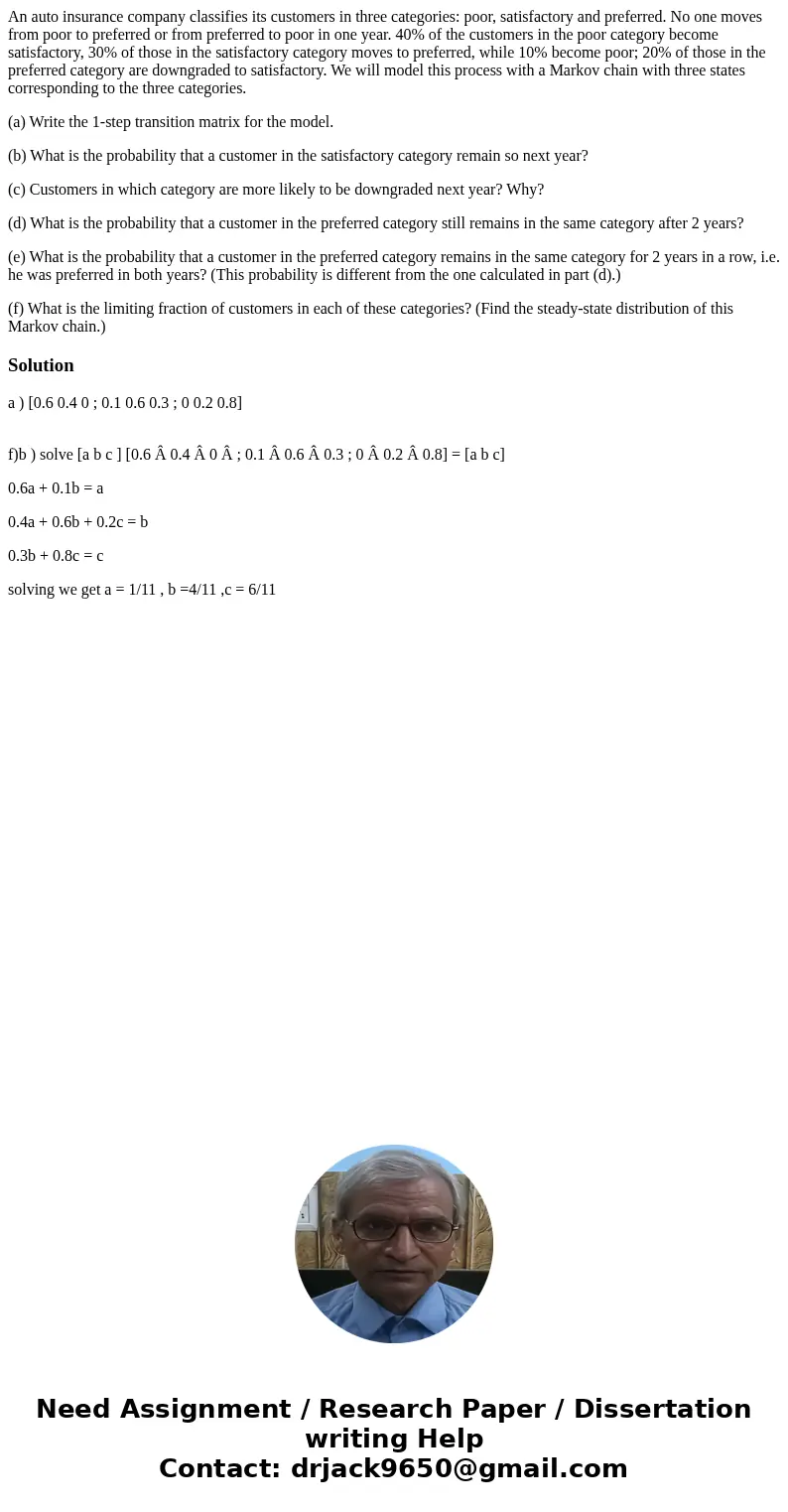An auto insurance company classifies its customers in three
An auto insurance company classifies its customers in three categories: poor, satisfactory and preferred. No one moves from poor to preferred or from preferred to poor in one year. 40% of the customers in the poor category become satisfactory, 30% of those in the satisfactory category moves to preferred, while 10% become poor; 20% of those in the preferred category are downgraded to satisfactory. We will model this process with a Markov chain with three states corresponding to the three categories.
(a) Write the 1-step transition matrix for the model.
(b) What is the probability that a customer in the satisfactory category remain so next year?
(c) Customers in which category are more likely to be downgraded next year? Why?
(d) What is the probability that a customer in the preferred category still remains in the same category after 2 years?
(e) What is the probability that a customer in the preferred category remains in the same category for 2 years in a row, i.e. he was preferred in both years? (This probability is different from the one calculated in part (d).)
(f) What is the limiting fraction of customers in each of these categories? (Find the steady-state distribution of this Markov chain.)
Solution
a ) [0.6 0.4 0 ; 0.1 0.6 0.3 ; 0 0.2 0.8]
f)b ) solve [a b c ] [0.6 Â 0.4 Â 0 Â ; 0.1 Â 0.6 Â 0.3 ; 0 Â 0.2 Â 0.8] = [a b c]
0.6a + 0.1b = a
0.4a + 0.6b + 0.2c = b
0.3b + 0.8c = c
solving we get a = 1/11 , b =4/11 ,c = 6/11

 Homework Sourse
Homework Sourse